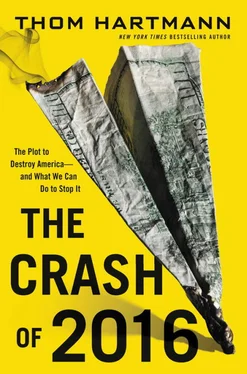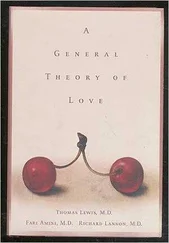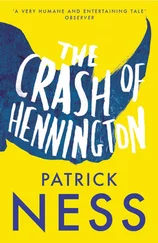But, eventually, the Great Forgetting took hold. And the Royalists and their madness crept back in.
Under the watch of the Royalists, the Reagan administration was philosophically opposed to the government breaking up companies. Over the next few decades, the monopolies of the Gilded Age returned.
On Wall Street, the twenty biggest banks own assets equivalent to 84 percent of the nation’s entire GDP. And just twelve of those banks own 70 percent of all the banking assets. That means our entire banking system relies on just a few whales that must be saved at all costs from going belly up, or else the entire system goes belly up.
And consider our food industry. According to Tom Philpott at Mother Jones magazine, agriculture oligopolies exist from farm to shelf. Just four companies control 90 percent of the global grain trade. Just three companies control 70 percent of the beef industry. And just four companies control 58 percent of the pork and chicken industry. 76
On the retail side, Wal-Mart controls a quarter of the entire US grocery market. And just four companies produce 75 percent of our breakfast cereal, 75 percent of our snack foods, 60 percent of our cookies, and half of all the ice cream sold in supermarkets around the nation. 77
And then there’s the health insurance market. Just four health insurance companies—UnitedHealth Group, WellPoint, Aetna, and Humana—control three-quarters of the entire health insurance market. And as a 2007 study by the group Health Care for America Now uncovered, in thirty-eight states, just two insurers controlled 57 percent of the market. In fifteen states, one insurer controlled 60 percent of the market.
Since there’s no functional competition in such a market, prices continue to get higher and higher while the profits for these whales skyrocket, too.
In the cellular phone market, just four companies—AT&T Mobile, Verizon Wireless, T-Mobile, and Sprint Nextel—control 89 percent of the market. And in the Internet market, just a handful of corporations—AT&T, Comcast, Time Warner, and Verizon—control more than half of the market.
From newspapers to television, radio to movies, monopolies dominate the markets.
If we were to give the Internet oligopolies the same treatment Richard Nixon gave AT&T in the 1970s, then maybe we Americans would have the same superfast Internet speeds and supercheap rates enjoyed by most of the rest of the developed world. For example, South Koreans get Internet speeds two hundred times faster than what most Americans get, and pay only $27 a month for their service. Professor Susan P. Crawford, author of Captive Audience: The Telecom Industry and Monopoly Power in the New Gilded Age and former board member of ICANN, told me that while the average American consumer pays around $90 a month for a cell phone with a data plan, the European average is just $19 (and the coverage is better and the data is both faster and unlimited). 78
Rising health-care, food, and energy costs can all be traced back to this problem of monopoly in America.
It’s a Second Gilded Age, and it’s headed for another Monopoly Endgame. And this time it will be worse than before.
We are no longer dealing with the Robber Barons, who savaged working people through the last half of the nineteenth century. And we aren’t talking about the Economic Royalists of FDR’s day, who plotted a coup. This is a new form of Royalist.
As Pulitzer Prize–winning journalist Chris Hedges told me, “The Robber Barons, however feudal they were, ran their enterprises within the nation-state itself. Now, we have corporate entities which seek the lowest possible wage around the world, in essence the prison labor in China, and are forcing the rest of the planet’s workforce to compete with this slave labor.” 79
He went on describing the Royalists at work today. “It’s similar to the age of the Robber Barons but in fact worse because there is no loyalty to the nation-state. The corporations are actually hollowing the country out from the inside… We’re creating a kind of neofeudalism.”
In his book The Collapse of Globalism , author John Ralston Saul lays out the primary driving ideology of globalism, which was unleashed on the world on a scale not previously seen before with the creation of GATT, the WTO, and NAFTA.
“The force of Globalism,” Saul writes, “through trade agreements, deregulation and privatization, would seriously weaken the ability of nation-states to act with any political independence.” 80
For most of American history, businesses—for-profit and nonprofit—had mission statements that were broader than simply serving the interests of the shareholders and CEOs, and referred instead to the long-term interest of the company, its workers, and its customers. And perhaps most important, the long-term interest of the nation it belonged to. After all, if your nation goes to hell, so does your market—a collapse isn’t good for business.
But globalism changed the game. Globalism is the breaking down of economic borders. What globalism does is peel away those government protections of national industries, and let global Economic Royalists dive in and feast on the goods. Once government is out of the way, Saul explains, the transnational corporations rise to power. “Richer than a majority of nation-states on the planet, free of the geographical and social obligations of these old states, beyond the embarrassing demands of nationalism, freed in fact from the emotional, immeasurable demands of the citizenry, the transnational would be able to organize world affairs in a more rational, efficient manner.”
Without the “demands of nationalism,” corporations can skate by without hiring American workers, they can dodge taxes, and they can spew toxic chemicals all over our commons. Instead of nationalism, corporations are bound by efficiency, which in turn yields higher profits. And it’s far more efficient and profitable to hire low-wage workers in India, to spend millions lobbying to avoid billions in taxes, and to skirt regulations that keep people working on oil rigs alive and prevent ecological disasters.
Clinton opened the door to globalism, but George W. Bush oversaw the looting of America by global psychopaths.
As a result of so-called free trade, every single month since 2001, our nation has shed, on average, fifty thousand manufacturing jobs. And in that same time period, over fifty thousand manufacturing plants—like the ones that used to line the rail tracks up and down the East Coast—have been permanently shut down.
At a blistering pace, American industries are being sold to the highest foreign bidders, be they Chinese business tycoons, Saudi princes, or Russian oligarchs. In the time it takes you to read just one page in this book, $240,000 worth of American industry is sold off to a foreign interest. 81
In the past thirty years, foreign investors bought roughly $3 trillion worth of American industry. 82That means $3 trillion worth of assets that were generating profits for America, hiring American workers, and making things with a “Made in America” stamp on them are now in the possession of foreign nations, so if they continue to operate, all their profits go overseas. It’s like a giant liquidation sale in a nation that’s on the verge of going out of business.
To highlight just how in peril the United States’ economic dominance in the twenty-first century is, consider this trend: In the first decade of this new century, some of the biggest transnational corporations in America—corporations that employ one-fifth of all American workers—have been shipping jobs away en masse. Since 2000, these transnationals have laid off 2.9 million Americans, and hired 2.4 million foreign workers. 83
Читать дальше












